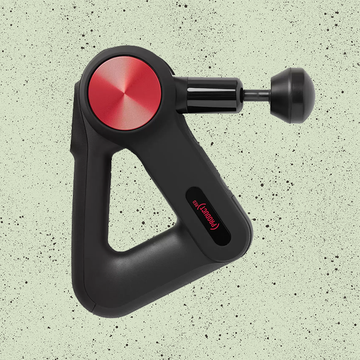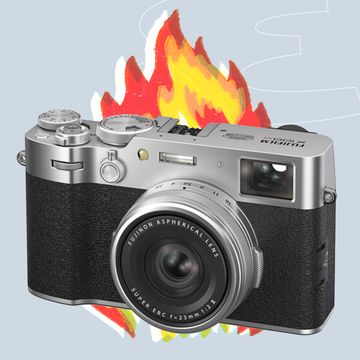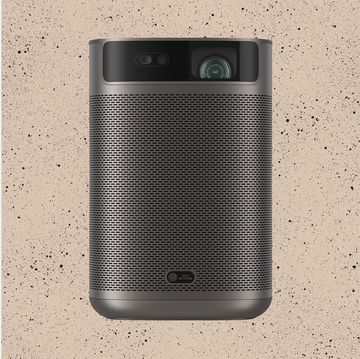In 1977, Frenchman Thierry Sabine got separated from his competitors in the Libyan desert on his Yamaha XT 500 motorbike during a section of the Abidjan-Nice rally. Alone for three days and nights with only a lucky amulet for company, he was eventually rescued, in bad shape, by the Algerian Air Force. The experience left its mark, and we’re not just talking tan lines. Sabine quickly decided he wanted to give other people the chance to get lost in the desert too, and the following year, in Paris, over 170 vehicles joined him at the start of the inaugural Paris-Dakar rally.
In its early years, tales of dilettante derring-do helped to put Sabine’s race on the map. In 1980, a team of four took on the unrelenting 10,000km course on Vespa scooters. Somehow two of them made it all the way to Senegal. A year later, a pair of Frenchmen entered an adapted Rolls-Royce Corniche for a lark, packing oysters and Champagne into its sizeable boot. The oysters ran out after three days but the Corniche improbably lasted the distance.
In 1982, the then Prime Minister’s son Mark Thatcher sparked an international incident when he and his Peugeot 504 went missing for six days in the Sahara. His mother Margaret personally settled the ensuing rescue bill, which, according to one official, included “the liberal dispensation of drinks to all and sundry after Mark Thatcher’s arrival at [the] hotel”.
Away from the playboys, the world’s best pro drivers were soon being drawn to the Dakar’s unique challenges: extreme heat, punishing distances, isolation, logistics, not to mention the technical requirements of handling a variety of road surfaces. If, that is, there were roads at all.
Belgian F1 driver and six-time Le Mans winner Jacky Ickx was one driver completely won over by the scale and setting: “In a race like the Dakar, you cannot cheat. You can encounter some extremely tough situations out there and that is when you find out what you are really made of. The landscape, the setting, cut you down to size. Africa opens your eyes.”
In 1983, Ickx won the car category in a trusty desert-ready 4x4 Mercedes G-Class. Ahead of the 1984 race, however, he went to Porsche with what seemed a hare-brained idea; to enter a team of specially developed Porsche 911s, and become the first manufacturer to try to win the world’s most gruelling race in a conventional sportscar.
After months of testing and development, the Porsche 911 Carrera 3.2 4x4 Paris Dakar (953) emerged. Raised 270mm, it was higher than its road-car equivalent and, with an all-wheel-drive system and double-wishbone suspension, it had been simultaneously stripped of excess weight and strengthened to withstand brutal conditions.
Out of more than 400 vehicles, many of them trucks and 4x4s, lined up in Place de la Concorde in Paris on New Year’s Day 1984, it was the three prototype Porsche 911 Carreras that presented the most remarkable sight.
“A 911 against four-wheel-drive, classic off-road vehicles in the Ténéré desert and the Assekrem in Algeria looked absolutely crazy to people,” remembered Ickx.
Twenty days later, after more than 10,000km on an arduous route through Algeria, Niger, Burkina Faso, Côte d’Ivoire, Guinea and Senegal, the speed, endurance and off-road capability of this remarkable car had changed everybody’s minds. The 911, driven by René Metge and Dominique Lemoyne, had won the Dakar.
“Nobody would have bet a penny on it,” said Ickx, whose own car suffered a cable fire and at one point dropped to 139th before climbing to an impressive sixth-place finish.
Porsche’s win remains one of the most famous victories in Dakar history. And the winning car would go on to inspire the development of another Porsche and Dakar icon, the 959, which Ickx drove to glory in 1986.
It’s against this evocative backdrop of headscarves, dust clouds and orange sand dunes that Porsche has developed a modern-day spiritual heir to its 40-year-old ancestor: the 911 Dakar.
We have seen plenty of one-off modified so-called Safari 911s over the years, like the recent Singer ACS, but it’s new ground to have an off-road version roll out from the Porsche factory.
Using the current 911 GTS as their base, 2,500 Dakars have been given the full Porsche treatment to become out-and-out off-roaders.
Jacked up by 50mm (which can be increased by another 30mm), with extended wheel arches and stainless-steel body protection, tow bars and knobbly Pirelli Scorpion all-terrain tyres designed to limit punctures, the 911 carries the rugged good looks of an off-kilter classic.
Lightweight windows and a bonnet taken from the GT3 maintain the racing feel, while an £18.5k rally-pack option provides you with a two-tone paint job and rally-stripe livery, where the word “Roughroads” replaces the nostalgic but now banned “Rothmans”.
Then there’s the strange but undeniable allure of a desert-ready “roof basket”, complete with floodlights. For full male-fantasy points, the options for blowing a fortune on wilderness-inspired extras are manifold. Roof-rack-compliant fuel canisters? A Porsche-branded folding spade? Go on then. And yes, there’s an actual roof tent that attaches to the rack itself for the ultimate in campsite one-upmanship. At least before you settle the chiropractor’s bill.
No doubt, the “lifestyle” associations of this model are going to play well in photographs, but it could never be called a show pony.
The 473bhp 3.0-litre twin-turbo flat-six petrol engine takes it to 60 in just 3.4 seconds on the road, but it’s dirt, gravel and sand that the Dakar prefers, where the new Rallye launch control can achieve spectacular results. If you can find a dusty track or a sand dune or two to slide around on in Rallye mode, it’s as fun as a modern car can be.
Select “off-road”, and Porsche promises that the Dakar offers the same 4x4 capabilities as a Cayenne.
Even on our uneven roads it feels at home and ridiculously capable, smirking in the face of potholes, preening over speedbumps and providing a more engaging and less terrifying experience than many current supercars. It might be no accident that the “slowest” 911 (OK, it still has a top speed of 149mph) is now also one of the most desirable.
As manufacturers continue to compete on ever-higher horsepower and top-speed metrics, cars with charisma and a decent back story, preferably involving lucky amulets, desert rescues and grand ambitions, stand out more than ever. ○














